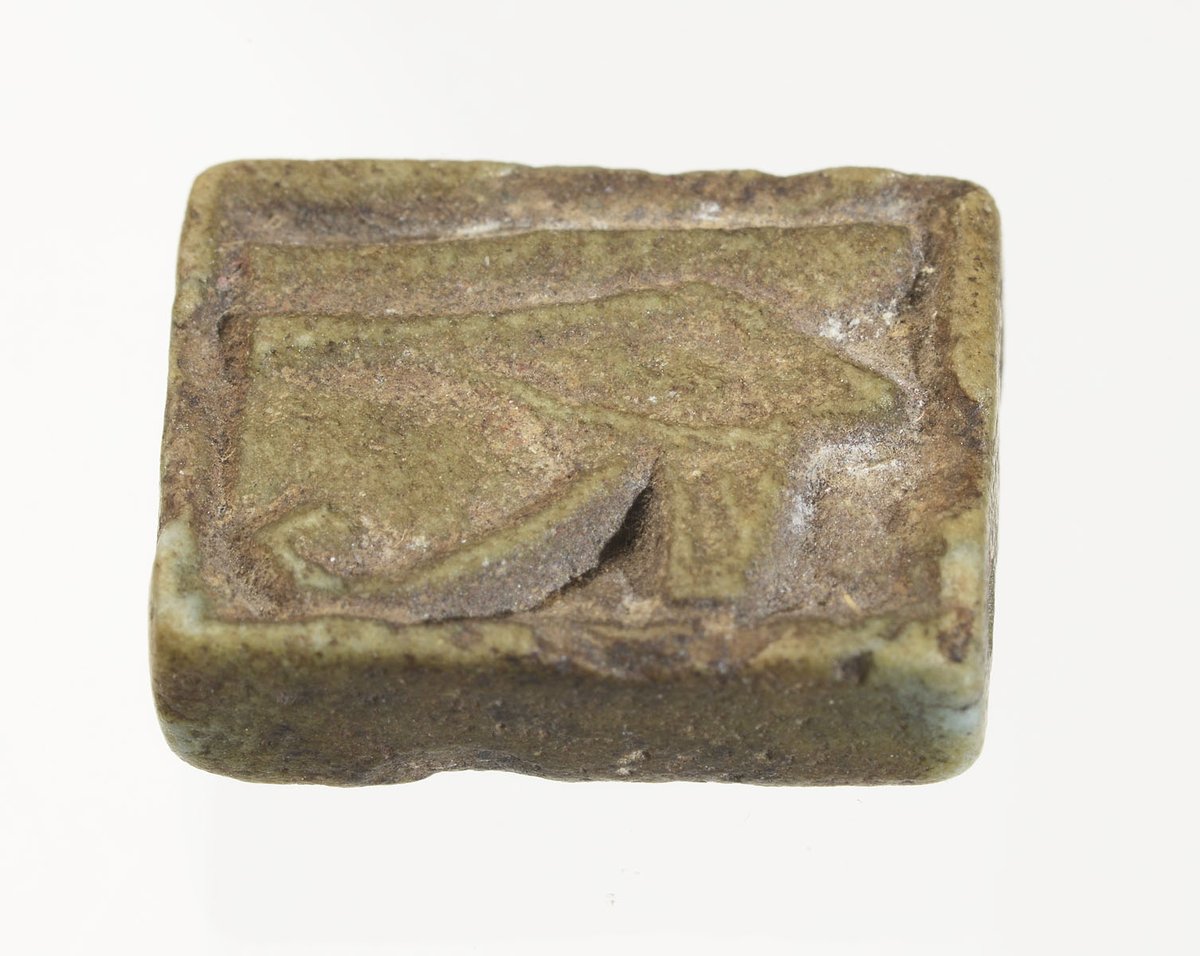
Plaque with Wedjat Eye
Egyptian Art
| Place of production | Egypt |
|---|---|
| Date | Roman Period |
| Object type | organic remains |
| Medium, technique | Animal mummy, linen |
| Dimensions | 37 × 12.5 × 12.5 cm |
| Inventory number | 97.7-E |
| Collection | Egyptian Art |
| On view | Museum of Fine Arts, Basement Floor, Ancient Egypt, Temples and gods |
Ibises (Threskiornis aethiopicus) were the sacred animals of the god Thoth in ancient Egypt. The Egyptians considered Thoth to be the god of writing, reading, counting, and accurate measurement associated with the movement of the stars and the passage of time. He was seen as a connoisseur of ancient texts with magical powers and foreign languages, but in addition to his features as a god of wisdom, Thot was also considered a warrior god who usually acts as a supporter of the falcon god Horus in his mythical battles. They also identified Thoth with the Moon itself, and in this function, he was considered the deputy of the Sun-god Re, and the vizier of the world of gods. As a vizier, Thot was closely related to the concepts of law and justice. According to the Egyptians, he recorded the results of the verdict (weighing of the heart) that determined the future fate of the dead in the afterlife. In his representations, Thoth could appear as an ibis or as a man with an ibis head, but he was also often depicted in the form of his other sacred animal, the Hamadryas baboon (Papio hamadryas). The mummification of ibises began in the seventh century BC when the first cemetery of ibises and baboons was established in the necropolis of Hermupolis Magna (Tuna el-Gebel), the most important cult centre of Thot. Initially, only this cemetery served as a burial place for mummified ibises. In later times, ibis cemeteries were also established in other cities of Egypt, which were named Hermaion after Thoth, who was identified with the Greek god Hermes in the Greco-Roman Period. In the Tuna el-Gebel cemetery, ibises were buried for about nine hundred years until the second century AD, and their number can be estimated to amount to several million.
This record is subject to revision due to ongoing research.